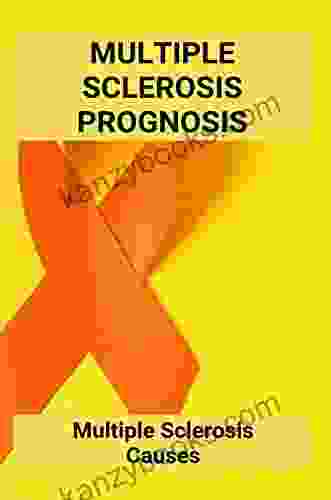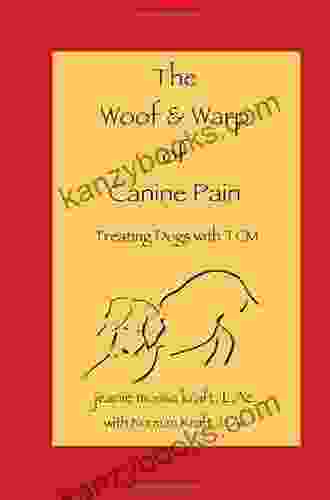Unveiling the Woven Tapestry of Canine Pain: A Guide to Recognizing and Relieving Your Dog's Distress

Dogs, our beloved companions, are prone to a range of physical and emotional ailments, including pain. As responsible pet owners, it is crucial to understand the multifaceted nature of canine pain, its causes, and the effective strategies for its management. This comprehensive article delves into the complexities of canine pain, providing insights into its recognition, assessment, and treatment. By exploring the "woof" and "warp" of canine pain, we empower ourselves to become better advocates for our furry friends, enhancing their well-being and ensuring their optimal quality of life.
Recognizing Canine Pain
Unlike humans, dogs cannot verbally express their discomfort. Therefore, recognizing canine pain requires keen observation and an understanding of their subtle cues. Pain in dogs can manifest in various ways, including:
Behavioral Changes: Changes in behavior, such as decreased activity, withdrawal from social interactions, or increased irritability, can be indicators of underlying pain.
The Woof and Warp of Canine Pain: Treating Dogs with TCM. Second Editionby Susan Scott4 out of 5
Language : English File size : 3007 KB Text-to-Speech : Enabled Screen Reader : Supported Enhanced typesetting : Enabled Lending : Enabled Print length : 146 pages Vocalizations: Dogs may vocalize their pain through whining, yelping, or growling. However, it is important to note that vocalizations can also be associated with other conditions, such as fear or anxiety.
Physical Signs: Dogs may exhibit physical signs of pain, such as limping, stiffness, or reluctance to move. They may also display teeth grinding, panting, or licking at affected areas.
Assessing Canine Pain
Properly assessing canine pain is crucial for effective management. Veterinarians use a combination of techniques to assess the severity and location of pain:
Physical Examination: A physical examination involves palpating the dog's body for areas of sensitivity or swelling. The veterinarian may also observe the dog's gait and posture to identify signs of pain.
Observation: Closely observing the dog's behavior and interactions can provide valuable information about the presence and severity of pain.
Pain Scales: Veterinarians may use pain scales to quantify the dog's discomfort. These scales consider factors such as the dog's behavior, physical signs, and response to touch.
Managing Canine Pain
Managing canine pain effectively involves a multifaceted approach, encompassing both pharmacological and non-pharmacological strategies.
Pharmacological Interventions:
Non-Steroidal Anti-Inflammatory Drugs (NSAIDs): NSAIDs, such as carprofen and meloxicam, are commonly used to reduce inflammation and alleviate pain in dogs.
Opioids: Opioids, such as tramadol and morphine, are prescribed for severe pain. They are typically used in combination with other pain medications.
Other Medications: In some cases, veterinarians may prescribe other medications, such as antidepressants or anti-seizure medications, to manage specific types of pain.
Non-Pharmacological Interventions:
Physical Therapy: Physical therapy, including massage, stretching, and laser therapy, can help improve range of motion, reduce pain, and promote healing.
Acupuncture: Acupuncture, a traditional Chinese medicine technique, is used to stimulate specific points on the body, relieving pain and promoting relaxation.
Behavioral Management: Environmental enrichment, behavioral training, and positive reinforcement techniques can help minimize stress and anxiety, which can exacerbate pain.
The Role of Veterinarians
Veterinarians play a vital role in managing canine pain. They are equipped with the knowledge and expertise to:
Diagnose the Cause of Pain: Determine the underlying cause of pain, whether it is due to injury, illness, or other factors.
Prescribe and Monitor Medications: Prescribe appropriate pain medications and monitor their effectiveness and side effects.
Recommend Non-Pharmacological Interventions: Provide guidance on non-pharmacological pain management strategies, including physical therapy, acupuncture, and behavioral management.
The Importance of Owners' Involvement
Owners play a crucial role in managing their dog's pain by:
Monitoring Pain: Regularly observing their dog's behavior and physical signs for any indication of pain.
Communicating with the Veterinarian: Clearly communicating any observations or concerns about their dog's pain to the veterinarian.
Administering Medications: Administering prescribed pain medications as directed by the veterinarian.
Providing a Supportive Environment: Creating a comfortable and supportive environment for their dog, reducing stress, and providing positive reinforcement.
Understanding the "woof" and "warp" of canine pain is imperative for providing compassionate care to our canine companions. By recognizing the subtle signs of pain, seeking prompt veterinary assessment, and implementing effective pain management strategies, we can alleviate their discomfort, enhance their well-being, and strengthen the unbreakable bond we share with our beloved furry friends.
4 out of 5
| Language | : | English |
| File size | : | 3007 KB |
| Text-to-Speech | : | Enabled |
| Screen Reader | : | Supported |
| Enhanced typesetting | : | Enabled |
| Lending | : | Enabled |
| Print length | : | 146 pages |
Do you want to contribute by writing guest posts on this blog?
Please contact us and send us a resume of previous articles that you have written.
 Book
Book Novel
Novel Page
Page Chapter
Chapter Text
Text Story
Story Genre
Genre Reader
Reader Library
Library Paperback
Paperback E-book
E-book Magazine
Magazine Newspaper
Newspaper Paragraph
Paragraph Sentence
Sentence Bookmark
Bookmark Shelf
Shelf Glossary
Glossary Bibliography
Bibliography Foreword
Foreword Preface
Preface Synopsis
Synopsis Annotation
Annotation Footnote
Footnote Manuscript
Manuscript Scroll
Scroll Codex
Codex Tome
Tome Bestseller
Bestseller Classics
Classics Library card
Library card Narrative
Narrative Biography
Biography Autobiography
Autobiography Memoir
Memoir Reference
Reference Encyclopedia
Encyclopedia Sergey Skudaev
Sergey Skudaev The Merry Way Witch
The Merry Way Witch Nancy Kennedy
Nancy Kennedy Sharon Merlier
Sharon Merlier Mr Holiday
Mr Holiday Michael Fox Rabinovitz
Michael Fox Rabinovitz Tim Gorman
Tim Gorman Sarah Weeks
Sarah Weeks Shawn Collins
Shawn Collins Wendy Hobson
Wendy Hobson P C Cast
P C Cast Stephen Lawson
Stephen Lawson Lisa Harris
Lisa Harris Shirley Kalpinolson
Shirley Kalpinolson Steven Chabotte
Steven Chabotte Tutti Smith
Tutti Smith Bad Manners
Bad Manners Something Else Publishing
Something Else Publishing Sarah Kennedy Norquoy
Sarah Kennedy Norquoy Tish Davis
Tish Davis
Light bulbAdvertise smarter! Our strategic ad space ensures maximum exposure. Reserve your spot today!

 Travis FosterUnveiling the Forbidden: Delve into "Dirty Little Secret" and Uncover the...
Travis FosterUnveiling the Forbidden: Delve into "Dirty Little Secret" and Uncover the... Harry HayesFollow ·12.4k
Harry HayesFollow ·12.4k Kirk HayesFollow ·5k
Kirk HayesFollow ·5k Chase MorrisFollow ·3.1k
Chase MorrisFollow ·3.1k Ivan TurnerFollow ·17.3k
Ivan TurnerFollow ·17.3k Steve CarterFollow ·5.1k
Steve CarterFollow ·5.1k Edgar Allan PoeFollow ·19.7k
Edgar Allan PoeFollow ·19.7k Neal WardFollow ·19.8k
Neal WardFollow ·19.8k Tyler NelsonFollow ·15.2k
Tyler NelsonFollow ·15.2k

 Virginia Woolf
Virginia WoolfGetting High Fat Diet Easily Using Keto Fat Bomb Cookbook
Unveiling the Power of Fat...

 Milan Kundera
Milan KunderaAre You Cryin' Brian? Find the Inspiration and Humor in...
Life can be full of...

 Edmund Hayes
Edmund HayesUnlock Your Vitality: The 15-Day Natural Energy Boost...
Are You Ready to...

 Gavin Mitchell
Gavin MitchellMultiple Sclerosis Life Expectancy: Unveiling the Impact...
Multiple Sclerosis (MS) is a...

 Gabriel Garcia Marquez
Gabriel Garcia MarquezGet The Thighs That Can Crack Man Head Like Walnut
Are you tired of weak, flabby...
4 out of 5
| Language | : | English |
| File size | : | 3007 KB |
| Text-to-Speech | : | Enabled |
| Screen Reader | : | Supported |
| Enhanced typesetting | : | Enabled |
| Lending | : | Enabled |
| Print length | : | 146 pages |










